Anki’s Overdrive
Game Concept Work
Overdrive was a game that required hardware to play. I explored other directions that would allow the player to play away from the track and compete against other people online.
Product Goals
• Make an additive mobile game.
• Create engagement outside of the physical track for when players weren’t at home.
• It needed to have a Campaign, PvP, and create a system that fed into the on track play.
Audience
• People that owned Anki Overdrive.
• People that did not own Anki Overdrive, but might want to.
Design Challenges
• How to support the pre-existing leveling system
• How to show this new content to the player
• How to keep the game bite sized
My Role
I explored an option that took advantage of the all the customizability that was
already in the game. It was an asynchronous play style, which allowed for quick game modes without needing real time matchmaking. I was responsible for rough wires, polished wires, prototyping, and game design.

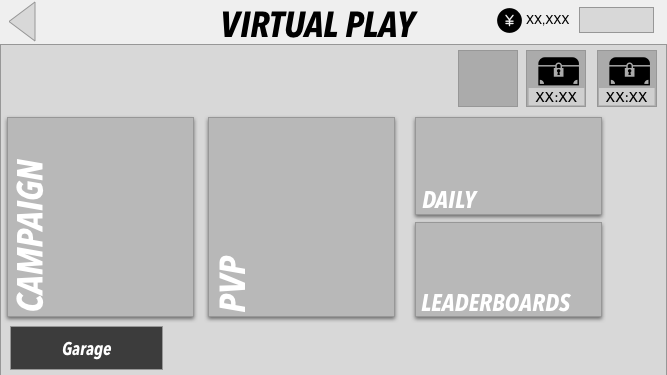
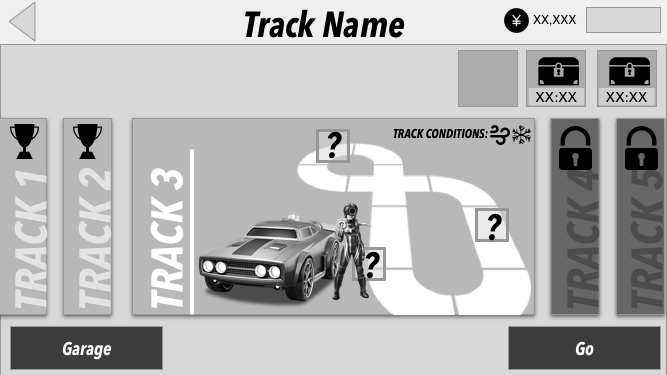
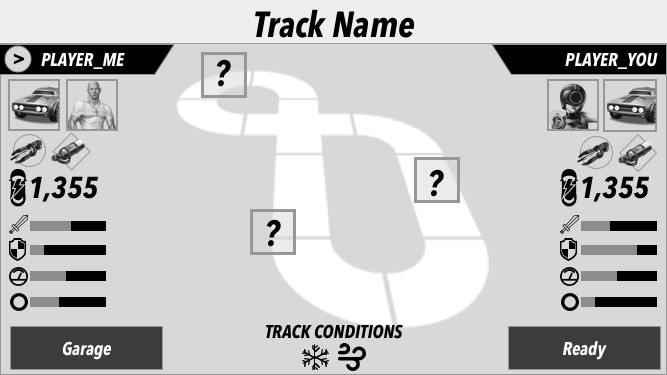
Small gif of the prototype and an example flow of a player opening up the Virtual Play campaign
Main Flow
The Virtual Game would exist off of the Main Screen. After entering the Virtual Play section, the user could either play the Campaign, PvP, or check out the Daily Challenge. Following through, the user could continue onto the campaign and select the next track available.
In order to keep the players moving in an out quickly, there would be options to save Load Outs. The user could quickly update their Load Outs (drivers, cars, weapons, etc) in order to compete best against their opponents and the track conditions.
Quick Load Out
On the Track Screen, the player would be able to see their opponent stats, the number of obstacles, and the track conditions at a glance. It allowed them to make a decision on what car, racer, etc. they wished to bring into battle.
I created a system where the player could have a few preset Load Outs. The goal was to streamline the player experience. I also offered a button that lead directly into the garage if the player wanted to create a new/custom Load Out.
These Load Outs would leverage the content that the player had already unlocked in their regular Overdrive game. Some content would be blocked if the player hadn’t unlocked it from Track play. This mobile game play would also allow players a chance to earn extra coins so they could purchase weapons from the main store. The game already had a robust item system, and I wanted to make it feel important in all aspects of the game.
Game Play
In order to keep the meta from getting stale, I added in some track conditions. There would be a pool of track conditions that are randomly added to the track. Wind, ice, dirt, etc.
On top of that, the play would hit several QTEs while in the race. Depending on their Load Out, the track conditions, and how the other player handled the same condition would determine speed and their place in the race. In PvP, the opponents have the same track conditions and obstacles. Although they would play at different times, the player would play against a simulation of their opponents results, making it feel as if they were playing at same time.
Victory would offer up a reward for engagement. These coins, items, etc., would be applicable in the main game and incentivize people to return to Track Play when they could.
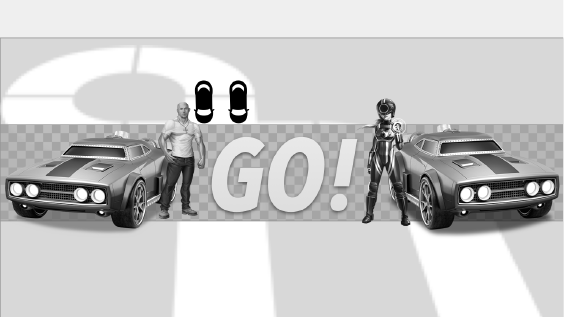
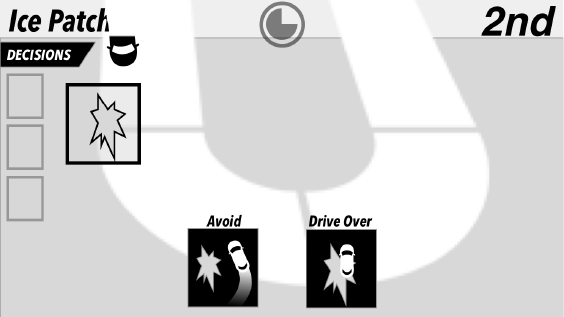


Project Take Aways
My exploratory work ended up not getting built, as the team decided to explore different avenues. However, the process was enjoyable. It felt like a viable option that would have added value to Overdrive. This allowed me to stretch my game design wings.
As for the whole of Overdrive, I only spent a short time on the team, but learned a lot. It was my first work project that dealt with hardware and software. It made me aware of attention splitting between device and track. Also how important haptic feedback and sound were to the success of a gamepad that existed on a smooth surface (phone/tablet screen).
There were parameters that I was first introduced to such as battery life, and hardware specifications that opened up whole new spaces for design thought and adaption.